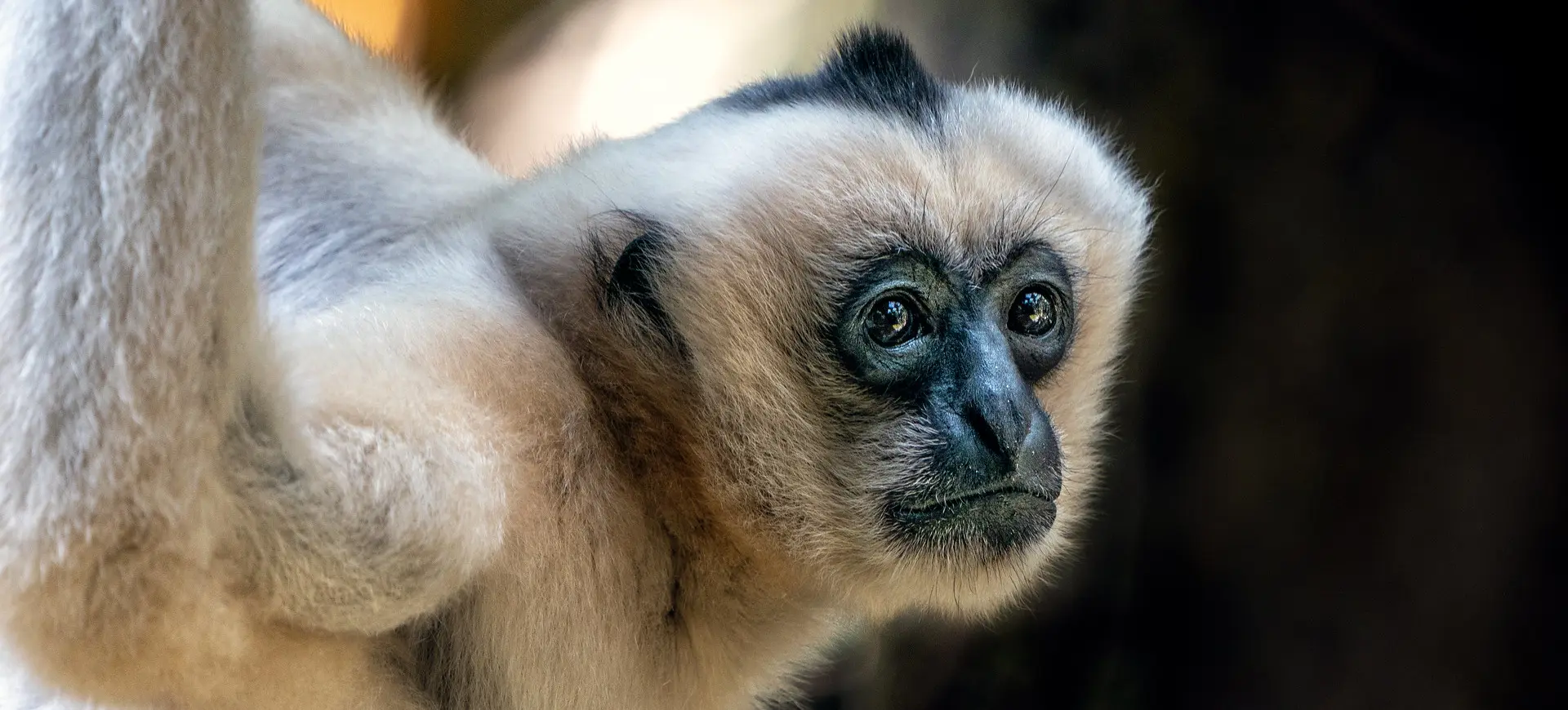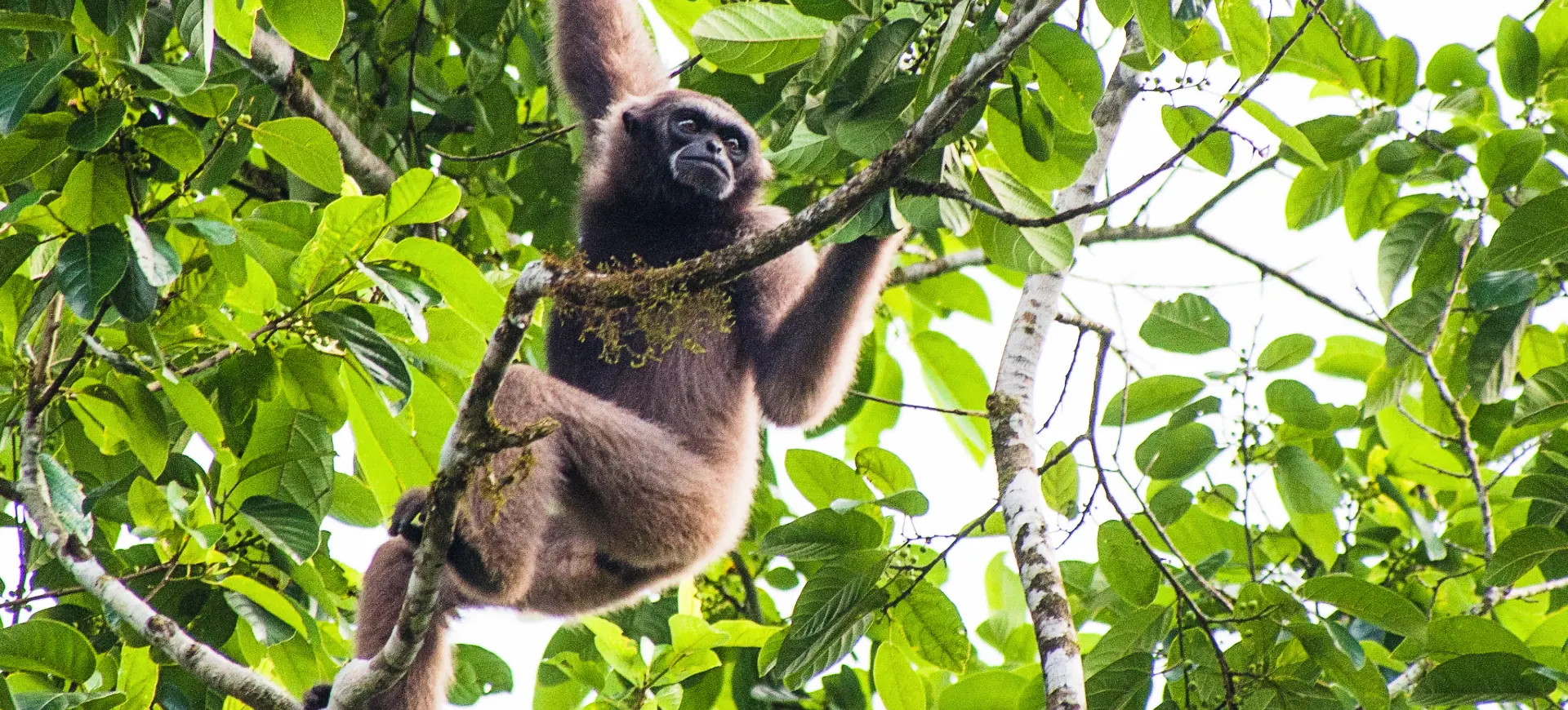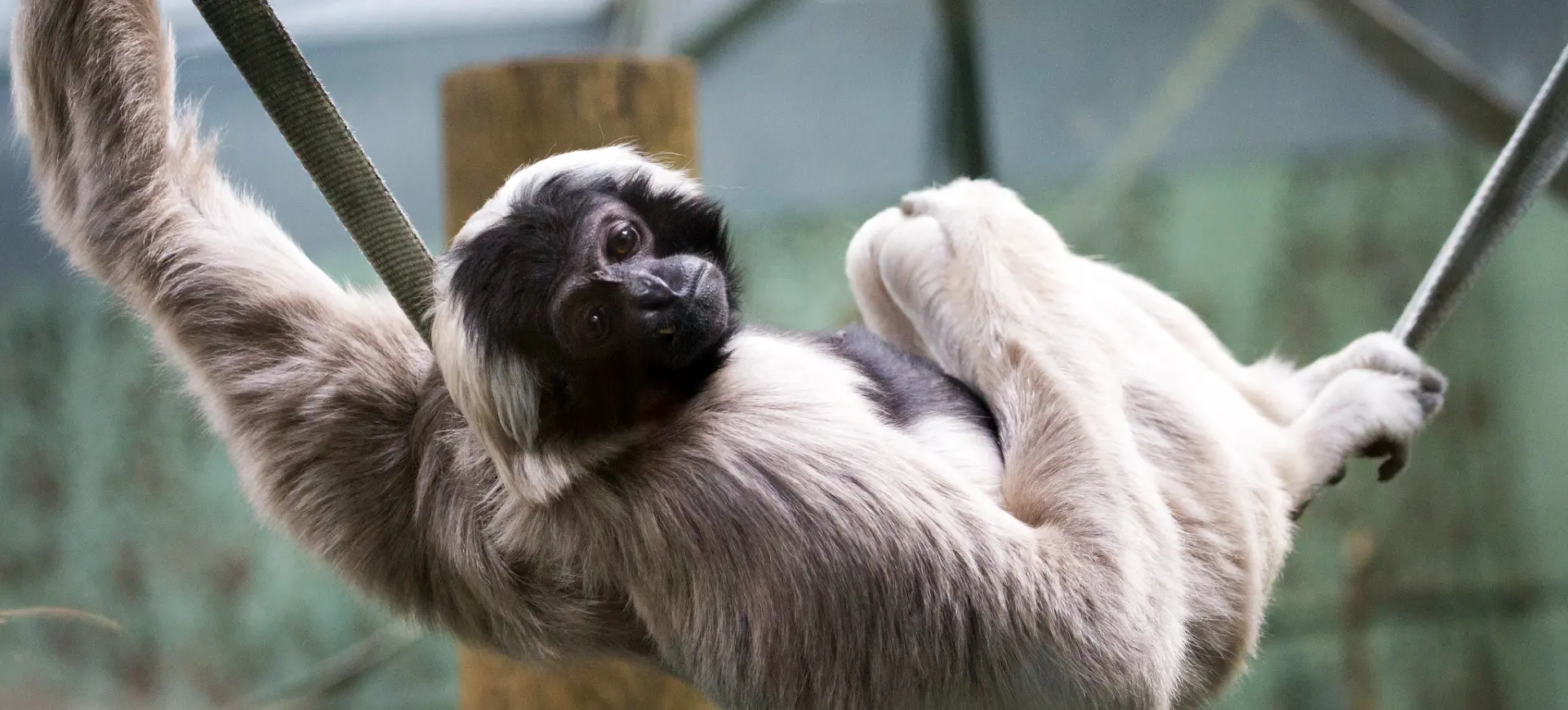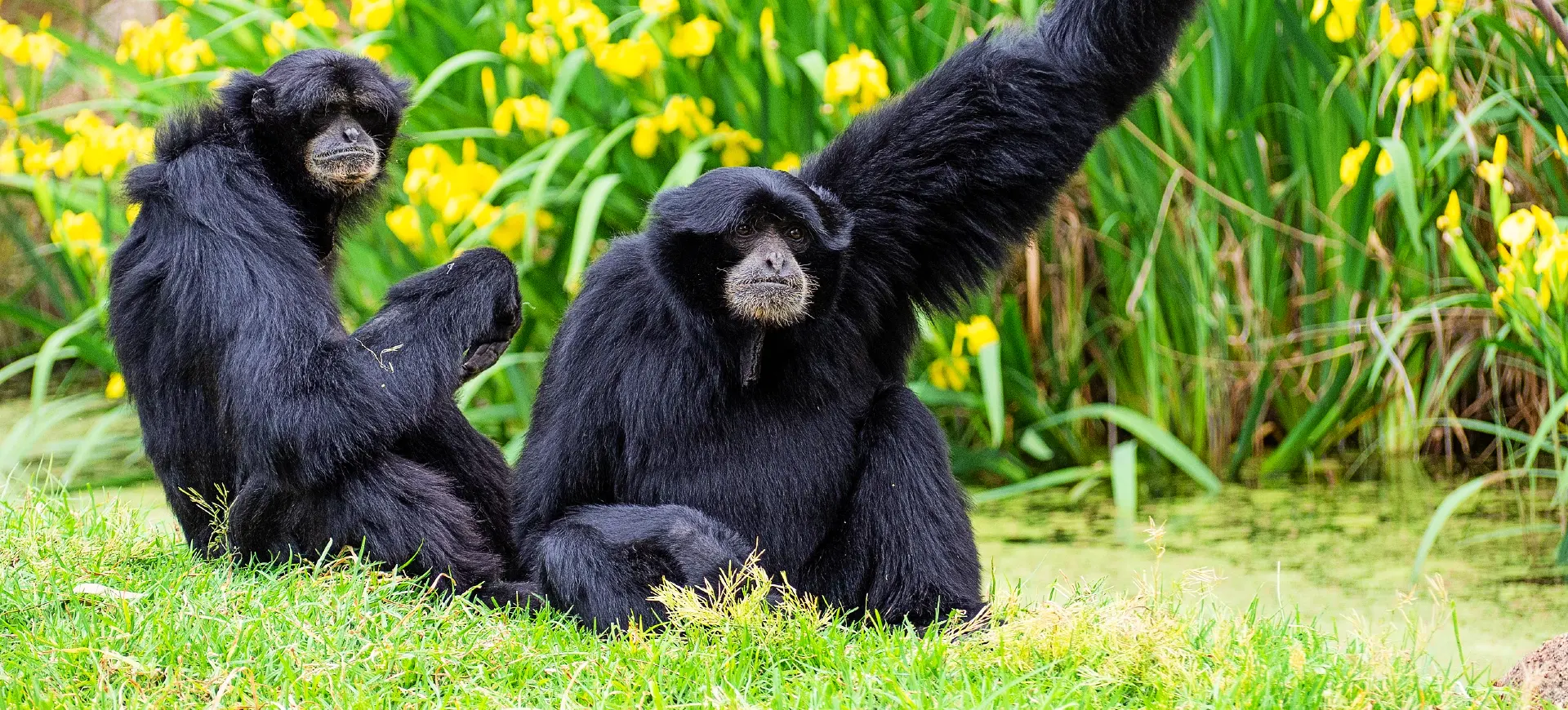Overview
The Lar Gibbon (Hylobates lar), also known as the White-handed Gibbon, is a primate species found in the tropical rainforests of Southeast Asia. It is known for its long limbs, ability to move quickly through the trees, and distinctive, complex vocalizations. Like all gibbons, Lar Gibbons are arboreal and are considered among the best acrobats in the animal kingdom due to their unique brachiating locomotion.
Lar Gibbons live in small, monogamous family groups and exhibit a strong bond between mated pairs. They communicate with each other through a variety of vocalizations, physical cues, and grooming. These social interactions contribute to the species’ strong family bonds and cohesive group dynamics.
Despite their adaptability to a wide range of habitats, Lar Gibbons are threatened by extensive habitat loss due to deforestation and the illegal pet trade. The International Union for Conservation of Nature (IUCN) currently lists them as Endangered.
Taxonomy
Kingdom
Phylum
Class
Order
Family
Genus
Species
Sub Species
Type
Physical Description:
Lar Gibbons are medium-sized primates known for their long limbs and hands, adapted to an arboreal lifestyle. Their fur is generally light brown to black, but their hands, feet, and facial area are characteristically white or lightly colored – thus their alternate name, the White-handed Gibbon.
One of their most distinctive physical traits is their mode of locomotion, known as brachiation. They can swing from branch to branch using their long arms, reaching speeds of up to 35 mph and making jumps of up to 50 feet. This ability to move swiftly and gracefully through the treetops is a key adaptation for their tree-dwelling lifestyle.

Lifespan: Wild ~25 || Captivity: ~30 years

Weight: Male: 13 lbs (6 kg) || Female: 13 lbs (6 kg)

Length: Male: 18-24 inches (46-61 cm) || Female: 18-24 inches (46-61 cm)

Height: Male: 17-18 inches (43-46 cm) || Female: 17-18 inches (43-46 cm)
Characteristic:
Native Habitat:
Lar Gibbons are native to the tropical rainforests of Southeast Asia, including countries such as Laos, Thailand, Indonesia, and Malaysia. They inhabit primary and secondary forests and can also be found in monsoon forests and semi-deciduous habitats. Their life is spent almost entirely in the trees, rarely descending to the ground.
Habitat loss due to logging, agricultural expansion, and human settlement is the most pressing threat to their natural habitats. This results in declining populations and fragmented habitats, leading to isolated Lar Gibbons groups vulnerable to local extinctions.
Climate Zones:
Biomes:
WWF Biomes:
Biogeographical Realms:
Continents:
Diet:
Diet & Feeding Habits:
Lar Gibbons are omnivorous; their diet consists primarily of fruits, especially figs, leaves, insects, and sometimes bird eggs. They play a crucial role in their ecosystem as seed dispersers, helping to maintain the diversity and health of their tropical forest habitats.
Despite being omnivores, their diet tends to be seasonal, depending on the availability of food resources in their habitat. They prefer sweet, ripe fruits and travel long distances to find food, covering large home ranges in their search for feeding grounds.
Mating Behavior:
Mating Description:
Lar Gibbons form monogamous pair bonds, with mating occurring throughout the year. The courtship behavior involves mutual grooming, physical contact, and duetting. The female gives birth to a single offspring after a gestation period of around 7 months.
The infant is primarily cared for by the mother for the first two years, although the father and siblings may also play a role in its care. Juveniles become independent around 4-5 but may stay within their family group until they reach sexual maturity at around 8-9 years.
Reproduction Season:
Birth Type:
Pregnancy Duration:
Female Name:
Male Name:
Baby Name:
Social Structure Description:
Lar Gibbons live in small, monogamous family groups consisting of a mated pair and their offspring. This structure is maintained through grooming, play, and complex vocalizations. Their loud calls, often involving duets between the mated pair, strengthen social bonds within the group and communicate their territory to other gibbons.
Despite their friendly nature, Lar Gibbons are territorial and will defend their home ranges from intruders. Their territories are typically 25-50 acres in size, with boundaries often overlapping with those of other families.
Groups:
Conservation Status:
Population Trend:
Lar Gibbon populations are difficult to estimate accurately due to their arboreal lifestyle and the dense forest habitats they occupy. Current estimates range from around 15,000 to 20,000 individuals in the wild, distributed across various protected areas and reserves in Southeast Asia.
The primary threat facing Lar Gibbons is habitat loss due to deforestation for agriculture, illegal logging, and the expansion of human settlements. Hunting and the illegal pet trade also pose significant risks. The fragmentation of their habitats has resulted in isolated populations, leading to reduced genetic diversity and increased susceptibility to disease.
Population Threats:
The primary threat to Lar Gibbons is habitat loss due to deforestation for agricultural development, logging, and expanding human settlements. They require large territories with abundant fruit trees to survive, so habitat degradation and fragmentation are particularly harmful, leading to isolated populations and reducing their ability to find food and mates.
Furthermore, hunting for the illegal pet trade and use in traditional medicine poses a significant threat. Lar Gibbons are particularly vulnerable due to their slow reproductive rates, long parental care periods, and reliance on stable social structures.
Conservation Efforts:
Lar Gibbons are protected by law in all their range countries, with several reserves and national parks established to safeguard their habitats. Conservation efforts include habitat preservation, anti-poaching measures, and promoting sustainable land-use practices in their native regions.
Ex-situ conservation programs, such as captive breeding in zoos and rescue centers, also play a role in their conservation. Educational and awareness-raising campaigns are key to reducing demand for gibbons as pets and promoting understanding of the threats they face.
Additional Resources:
Fun Facts
- Lar Gibbons are also known as the “singing apes” due to their complex vocalizations.
- They are monogamous, which is relatively rare among primates.
- Lar Gibbons are among the fastest of all primates, reaching speeds up to 35 mph in the treetops.
- They are excellent brachiators, using their long arms to swing from branch to branch.
- Their diet plays an important role in seed dispersal, aiding in the growth of their forest habitats.
- Lar Gibbons have been observed using tools in captivity, demonstrating a high level of intelligence.
- Their fur color can vary significantly, ranging from creamy beige to black.
- The male and female Lar Gibbons often sing duets to strengthen their pair bond and mark their territory.
- Despite their relatively small size, they have a territory range of 25-50 acres.
- The lifespan of Lar Gibbons is around 25 years in the wild, but they can live up to 30 years in captivity.








